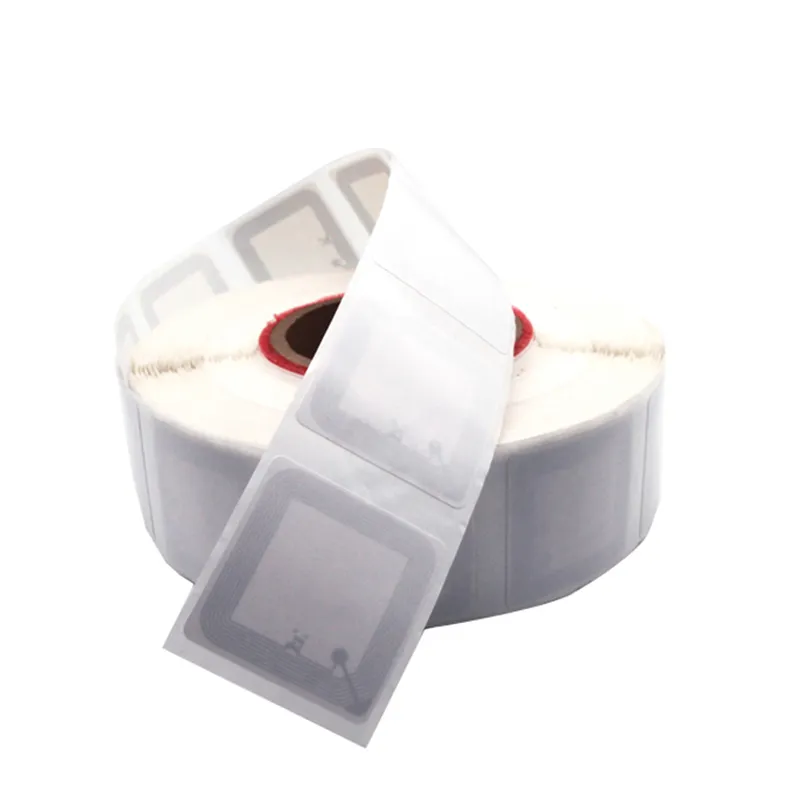Tapa'o faahoro parau no te vairaa buka RFID
TE MAU NOTA
Te mau tao'a i tuuhia i nia iho

Custom RFID Bracelet
Fujian RFID Solutions Company offers Custom RFID Bracelet with a…

RFID Cable Seal
The rfid cable seal is a tamper-proof, one-time design used…

RFID Tag Industrial
Ua haapii mai te 7017 'O Textile Laundry RFID Tag te hō'ē 'oire iti nō Tatarūnia.…

125khz Key Fob
Fujian RFID Solution Co.,Ltd is a reliable Access Control Cards…
Te mau parau apî i ma'iri a'

Faataaraa poto:
Te faaohipa nei te RFID Library Tag i te mau rave'a aravihi RFID no te haaputu i te mau haamaramaramaraa, self-service borrowing and returning, book inventory, and other functions in libraries. It also aids in anti-theft, library card management, and collection information statistics. RFID tags are encoded with identification and security information and can be read at a distance to identify tagged items. They enhance library service by minimizing wait times, improving inventory efficiency, enabling book placement and search, preventing book theft, monitoring book borrowing, and setting up automatic borrowing and returning reminders.
Faaite mai ia matou:
Tuhaa no te mau hoho'a
RFID Library Tag uses RFID book tag technology to realize automatic data collection function, combined with a database and software management system, to realize library self-service borrowing and returning, book inventory, book loading, book retrieval
Library anti-theft, library card management, library card issuance, collection information statistics, and other functions. Therefore, our RFID high-frequency book tags are not only anti-theft functions, our company also sells RFID-related wristbands, clothing tags, jewelry tags, anti-theft tags, carbon ribbons, and other products.
Parameter
| Base material | Papers / PET / PVC / plastic |
| Antenna material | Aluminum etched antenna; COB + Copper coil |
| Chip material | Original chips |
| Protocol | ISO15693 and ISO 18000-6C, EPC Class 1 Gen 2 |
| Te pinepineraa | 13.56MHz (HF) and 860-960MHz (UHF) |
| Available Chip | 13.56MHZ– F08, 860-960MHZ– Alien H3, Alien H4, Monza 4D,4E,4QT Monza5 |
| Reading Distance | 0.1~10m(depend on the reader, tag, and working environment ) |
| Working mode | Read-only or read-write according to chip type |
| Read/write endurance | >100,000 times |
| Customized service | 1. custom printing logo, text 2. pre-code: URL, text, numbers 3. size, shape |
| Rahi | Size50*50mm,50*24Te mau mana'o tauturu no te,50*18Te mau mana'o tauturu no te,50*32Te mau mana'o tauturu no te,50*54Te mau mana'o tauturu no te,80*25Te mau mana'o tauturu no te ,98*18Te mau mana'o tauturu no te,128*18mm or customized |
| Packing | 5000pcs/roll ,1-4roll/carton,or by customized |
| Working temperature | -25℃ to +75℃ |
| Te anuvera o te haaputuraa | -40℃ to +80℃ |
| Applied field | te faatereraa i te mau faufaa, apparel management, library book management, wines management, and the application of bags, trays, luggage, e te tahi atu â |
Te mau nota
The library industry uses RFID to achieve modern organization and improve visitor experience. Manual management of library assets can be inaccurate and time-consuming, but implementing RFID can automate some or all of the process.
By tagging books and other returnable library assets, RFID can track and monitor these items efficiently. RFID is also used in innovative ways to provide additional functions, making libraries as smart as the books they contain.
RFID tags are encoded with identification and security information and then attached to books or library materials. When used with an RFID reader, RFID tags can be read at a distance to identify the tagged items or detect the security status of the tag.
RFID Library Tag Use
- The RFID-equipped self-service borrowing and returning equipment instantly reads the book’s RFID tag and matches it with the reader’s library card to enable self-service borrowing and returning. This drastically minimizes reader wait times and enhances library service.
- Inventory and organizing books: Non-contact RFID readers may scan several RFID tags’ book contents at once, improving book inventory efficiency. RFID inventory carts or portable inventory equipment can quickly discover and return books to their original locations.
- Book placement and search: RFID technology allows the library to automatically scan the bookshelf, swiftly identify books, and help users discover them. This enhances library borrowing and reduces book searching time.
- Book theft prevention: RFID tags prevent book theft. The library personnel will get an alarm from the access control system if a book is stolen without borrowing.
- Book management and data statistics: The RFID technology lets the library monitor book borrowing, circulation, and borrowing patterns in real-time. These statistics assist libraries in identifying users’ requirements, optimizing book purchases and configurations, and enhancing service.
- Automatic borrowing and returning reminders: The RFID system can set up automatic reminders depending on readers’ borrowing records and time. The system sends a notice to readers when books are overdue so they may return them on time and avoid late penalties.
![Te mau mana'o tauturu no te haapiiraa [Te taatoaraa o te ohipa | OEM | ODM]](https://www.fjrfidfactory.com/wp-content/uploads/2024/04/logo.webp)













